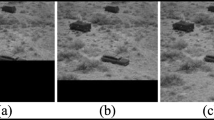Abstract
Secret Sharing is required in situations where access to important resources has to be protected by more than one person. We propose new secret-sharing scheme that works based on parallel counting of the ones within the shares to generate the secret output. Our work presented two different modeling variations that are mainly different in the secret-sharing keys generation where both are studied elaborating their pros and cons. Our counting-based secret shares key reconstruction is implemented and simulated considering the security level required by the usage functions. Comparisons showed interesting results that are attractive to be considered. This secret sharing method is of great benefit to all multimedia secret sharing applications such as securing bank sensitive accounts and error tracking, voting systems trust, medical agreements, wills and inheritance authentication management.









Similar content being viewed by others
References
Ahmadoh E, Gutub A (2015) Utilization of two diacritics for Arabic text steganography to enhance performance. Lecture Notes on Information Theory 3(1):42–47
Asmuth C, Bloom J (1983) A modular approach to key safeguarding. IEEE Trans Inf Theory 29(2):208–210
G.R. Blakley 1979 “Safeguarding cryptographic keys”, Proc. of 1979 AFIPS National Computer Conference 48:313–317
Blundo C, De Santis A, Gargano L, Vaccaro U (1993) Secret sharing schemes with veto capabilities. Proceedings of the First French-Israeli Workshop, Paris, France:19–21
Blundo C, Cresti A, De Santis A, Vaccaro U (1996) Fully dynamic secret sharing schemes. Theor Comput Sci 165:407–440
Gutub A (2007) Area flexible GF(2k) elliptic curve cryptography coprocessor. International Arab Journal of Information Technology (IAJIT) 4(1):1–10
Gutub A (2007) High speed hardware architecture to compute GF(p) Montgomery inversion with scalability features. IET (IEE) Proc Computers & Digital Techniques 1(4):389–396
Gutub A (2007) Efficient utilization of scalable multipliers in parallel to compute GF(p) elliptic curve cryptographic operations. Kuwait Journal of Science & Engineering (KJSE) 34(2):165–182
Gutub A (2010) Preference of efficient architectures for GF(p) elliptic curve crypto operations using multiple parallel multipliers. Int J Secur 4(4):46–63
Gutub A, Amin A (1999) An expandable Montgomery modular multiplication processor. Eleventh international conference on microelectronics, ICM'99, pages: 173–176, Kuwait
Gutub A, Tahhan H (2003) Improving cryptographic architectures by adopting efficient adders in their modular multiplication hardware. The 9th annual gulf internet symposium, Khobar, Saudi Arabia, October 13-15
Gutub A, Tenca A (2004) Efficient scalable VLSI architecture for Montgomery inversion in GF(p). Integr VLSI J 37(2):103–120
Herzberg A, Jarecki S, Krawczyk H, Yung M (1995) Proactive secret sharing or: how to cope with perpetual leakage. Proceedings of the 15th annual international cryptology conference on advances in cryptology (CRYPTO '95), London, UK: Springer-Verlag, pp 339e–352
Krawczyk H (1993) Secret Sharing Made Short. Proceedings of the 13th Annual International Cryptology Conference (CRYPTO’ 93), Santa Barbara, California, USA, 22–26 August, pp 136–146
Laih C-S, Harn L, Lee J-Y, Hwang T (1990) “Dynamic threshold scheme based on the definition of cross-product in an N-dimensional linear space”, proceedings of advances in cryptology (CRYPTO’ 89). Lect Notes Comput Sci 435:286–298
McEliece RJ, Sarwate ADV (1981) On sharing secrets and reed-Solomon codes. Commun ACM 24(9):583–584
Ogata W, Kurosawa K, Stinson DR (2006) Optimum secret sharing scheme secure against cheating. SIAM J Discret Math 20(1):79–95
Savas E, Naseer M, Gutub A, Koc C (2005) Efficient unified Montgomery inversion with multi-bit shifting. IEE Proceedings Computers and Digital Techniques 152(4):489–498
Shamir A (1979) How to share a secret. Commun ACM 22:612–613
Tassa T (2007) Hierarchical threshold secret sharing. J Cryptol 20(2):237–264
Wang K, Zou X, Sui Y (2009) A Multiple Secret Sharing Scheme based on Matrix Projection. Proc. of the 33rd Annual IEEE International Computer Software and Applications Conference, pp 400–405
Zhang Y-D, Zhang Y, Hou X-X, Chen H, Wang S-H (2017) Seven-layer deep neural network based on sparse autoencoder for voxelwise detection of cerebral microbleed. Multimed Tools Appl:1–18. https://doi.org/10.1007/s11042-017-4554-8
Acknowledgments
The authors would like to thank Umm Al-Qura University (UQU) for hosting this research. Appreciation is given to our Master program allowing the graduate student (Miss Nouf Al-Juaid) as co-author of this paper from Shaqra University to work this research with us performing the modeling, testing and all simulations. Thanks to the Department of Information and Technical Services at the Custodian of the Two Holy Mosques Institute of the Hajj and Umrah Research for encouraging this teamwork. Thanks to the hosting department, i.e. Computer Engineering Department at the College of Computer & Information Systems, for motivating this wonderful cooperation guided within Umm Al-Qura University, Makkah, Saudi Arabia.
Author information
Authors and Affiliations
Corresponding author
Rights and permissions
About this article
Cite this article
Gutub, A., Al-Juaid, N. & Khan, E. Counting-based secret sharing technique for multimedia applications. Multimed Tools Appl 78, 5591–5619 (2019). https://doi.org/10.1007/s11042-017-5293-6
Received:
Revised:
Accepted:
Published:
Issue Date:
DOI: https://doi.org/10.1007/s11042-017-5293-6




